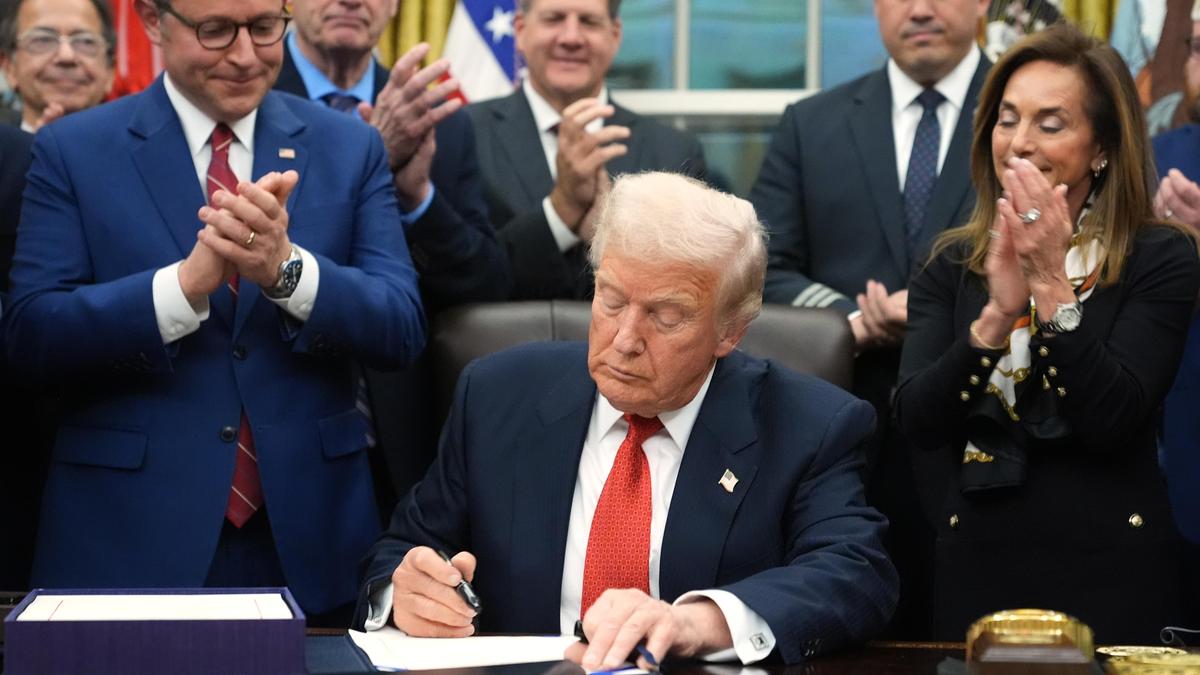15 November 2025 The Hindu Editorial
What to Read in The Hindu Editorial( Topic and Syllabus wise)
Editorial 1: Tepid relief
Context
Ending the shutdown does not ensure that new crises won’t arise.
Introduction
The recent U.S. shutdown, the longest in history, exposed deep political gridlock and intense partisan rivalry. Although President Donald Trump ended the standoff after 43 days, the ordeal created widespread economic disruption and uncertainty for millions. The episode revealed how fiercely contested issues like health-care subsidies, budget control, and legislative power continue to shape national governance.
Longest Shutdown and Political Standoff
- President Donald Trumpoversaw the longest federal shutdown in U.S. history, lasting 43 days.
- Nearly 4 million federal employeesfaced furloughs and unpaid work.
- Republicans blocked Democratic efforts to extend health insurance subsidiesfor low-income citizens, expiring in 2025.
- In return, Democrats received only a Senate vote assurance, with no House voteor Republican backing.
Senate Vote and Party Crossovers
- The Senate ended the deadlock with a 60–40 vote, enabled by eight Democratscrossing party lines.
- The approved package funds some federal agencies for the full fiscal yearand others until January 30, 2026.
- A victorious Trump pledged to push for ending the congressional filibuster, traditionally used to prevent rash legislation.
- Democrats had used the filibuster to protect affordable health carefor low-income families.
Economic and Social Impact of Shutdown
- The shutdown caused severe disruptions, halting public services, including air travel, IRS operations, and national parks.
- Programmes supporting food security, early childhood learning, and social servicessuffered major setbacks.
- The prolonged closure created widespread economic uncertaintyand hindered routine government functioning.
- Despite Democrats’ recent State-level election wins, Republican control of Congress gave them greater leverage.
Political Stakes Ahead
- The real test of power between Trump and the Democrats will come in the mid-term elections next year.
- These elections will act as a referendumon the Trump administration’s handling of jobs, health care, education, and immigration.
- Republicans risk alienating votersif they refuse cooperation with liberal and progressive lawmakers.
- The electoral outcome will determine the future direction of economic policyaffecting everyday Americans.
Conclusion
While the shutdown’s end offers temporary relief, it highlights persistent structural tensions within American politics. The upcoming mid-term elections will act as a decisive test of public confidence in Trump’s leadership, congressional cooperation, and the direction of national policy priorities. Without genuine bipartisan engagement, both parties risk deepening divisions and undermining critical issues affecting ordinary Americans.
Editorial 2: Double engine
Context
Welfare measures launched just before the Bihar elections boosted the NDA’s prospects.
Introduction
The NDA’s sweeping victory in Bihar stems from targeted welfare, broad caste alliances, and the enduring appeal of Nitish Kumar and Narendra Modi. Strategic social engineering, focused women-centric schemes, and disciplined messaging strengthened the NDA’s position, while the Mahagathbandhan struggled with credibility issues, fragmented campaigning, and the lingering negative memory of its earlier governance.
Strategic Factors Behind NDA’s Victory
- The NDA’s win in Bihar was driven by targeted welfare schemes, skilled social engineering, and high-impact messaging.
- The combined popularity of Nitish Kumarand Narendra Modi boosted confidence among voters.
- Clever timing of a new cash-dole schemestrengthened NDA’s support, especially among women.
- Women were mobilised as a cross-caste voting bloc, giving NDA a decisive edge.
Social & Caste Coalition Dynamics
- NDA built a broad-based caste alliance, wider than that of the Mahagathbandhan.
- The Opposition continued to be seen as Yadav–Muslim centric, limiting its reach.
- Welfare schemes for EBC (Economically Backward Classes)and women deepened NDA’s social penetration.
- Higher female voter turnoutsignificantly favoured NDA.
Role of Leadership & Political Messaging
- Nitish Kumar, initially viewed as declining, revived his influenceand emerged central to NDA’s win.
- Despite BJP winning more seats/votes, its political access in Bihar still depends on Nitish Kumar’s appeal.
- Modi’s model of Hindutva + developmentcontinues to attract substantial support in Bihar.
- NDA neutralised anti-incumbency despite its long tenure since 2005.
Weaknesses of the Mahagathbandhan
- The RJD–Congress alliance lacked unity, clarity, and organisational strength.
- Their campaign was fragmented—oscillating between welfare, social justice, and raising doubts on the electoral process.
- Voters still remembered the misgovernance of the 1990s, which damaged the alliance’s credibility.
- The coalition ended up paying for the historical failuresof previous leaders, unlike NDA which escaped anti-incumbency.
Broader Lessons & Political Implications
- Alleging that the BJP wins only through a “compromised process” is politically unconvincing and strategically limiting.
- Critiques of India’s electoral system, though important, fail to resonate as mass election issues.
- Opposition parties must reform internally, articulate a unified and inspiring message, and confront the dominance of Hindutvain the Hindi belt.
- The verdict signals a need for Opposition forces to accept the popularity of BJP’s narrativeand plan a realistic counter-strategy.
Conclusion
Bihar’s verdict underscores the Opposition’s organisational weaknesses and the NDA’s ability to overcome anti-incumbency through strong leadership narratives and effective welfare outreach. Raising doubts about the electoral process brings little gains; instead, parties must rebuild internally, craft coherent alternatives, and confront the growing Hindutva influence. Only then can they mount a meaningful challenge to the NDA’s political dominance.
![]()


